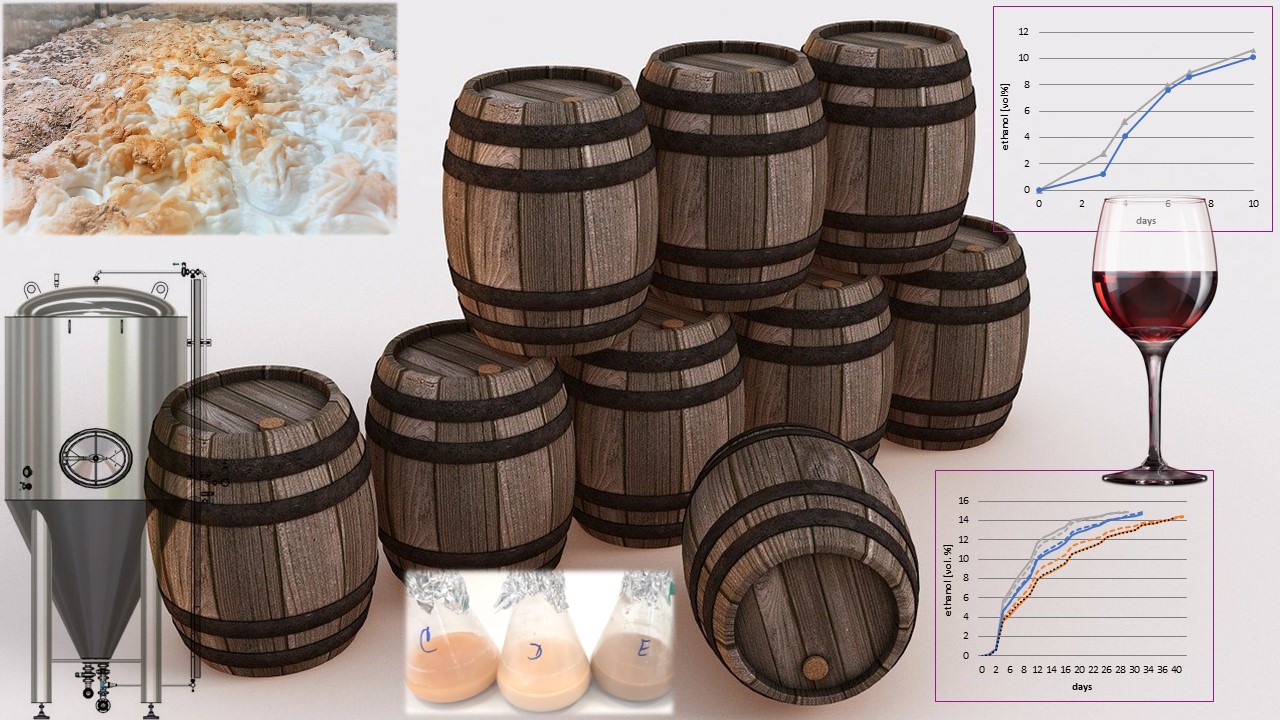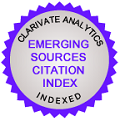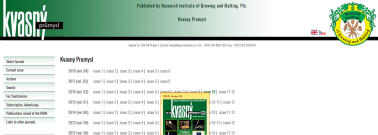Brewer´s spent yeasts for oenology: from characterisation to must fermentation
DOI:
https://doi.org/10.18832/kp2023.69.765Keywords:
yeast derivatives, spent brewer's yeasts, oenologyAbstract
In order to follow the principles of the circular economy, the spent brewer´s yeasts were in this work evaluated to be considered as a raw material for production of yeast derivatives for oenology. They provide natural source of organic nutrition, improve organoleptic properties and physico-chemical stability of wines. In this work, the spent yeasts from different beer styles were evaluated for their primary characteristics. Three types of yeast derivatives were prepared, inactive yeasts used for active dry yeast rehydration, lysates for organic nitrogen supply during fermentation and yeast hulls for adsorption of fermentation inhibitors. The chemical properties, fermentation kinetics and aromatic compounds formation of spent yeast derivatives were comparable to the well-recognized commercial products. However, the sensory analysis of final wines revealed bread-like and yeast autolysis off-flavors.
References
Data Bridge Market Research [online]. Global Wine Yeast Market-Industry Trends and Forecast to 2029. https://www.databridgemarketresearch. com/reports/global-wine-yeast-market [cit. 2023-07-03]
Gabrielli, M., Aleixandre-Tudo, J. L., Kilmartin, P. A., Sieczkowski, N., du Toit, W.J. (2017). Additions of Glutathione or Specific Glutathione-rich Dry Inactivated Yeast Preparation (DYP) to Sauvignon blanc Must: effect on wine chemical and sensory composition. South African Journal of Enology and Viticulture, 38(1), 18–28.
Fărcaş, A. C., Socaci, S. A., Mudura, E., Dulf, F. V., Vodnar, D. C., Tofană, M., Salanță, L. C. (2017) Exploitation of Brewing Industry Wastes to Produce Functional Ingredients. In: Kanauchi, M. (ed.) Brewing Technology. InTechOpen. https://doi.org/10.5772/intechopen.69231
Gijs, L., Perpète, P., Timmermans, A., Guyot-Declerck, Ch., Delincé, P., Collin, S. (2004) Assessment of Added Glutatióne in Yeast Propagations, Wort Fermentations, and Beer Storage. Journal of the American Society of Brewing Chemists, 62(3), 97–102. https://doi.org/10.1094/ASBCJ-62-0097
Jaeger, A., Arendt, E. K., Zannini, E., Sahin, A. (2020). Brewer’s Spent Yeast (BSY), an Underutilized Brewing By-Product. Fermentation, 6(4), 123. https://doi.org/10.3390/fermentation6040123
Kwiatkowski, S., Edgar, S. (2012). Yeast (Saccharomyces cerevisiae) Glucan Polysaccharides – Occurrence, Separation and Application in Food, Feed and Health Industries. In: Karunaratne, D. N. (ed.) The Complex World of Polysaccharides. InTechOpen. https://doi.org/10.5772/48100
Nand, K. (1987). Debittering of Spent Brewer´s Yeast for Food Purpose. Molecular Nutrition and Food Research, 31(2), 127–131. https://doi.org/10.1002/food.19870310208
OIV codex (2021). International Code of Oenological Practices, Issue 2021, pp. 435. ISBN 978-2-85038-030-3; available from: https://www.oiv.int/public/medias/7713/en-oiv-code-2021.pdf
Podpora, B., Swiderski, F. (2015). Spent Brewer's Yeast Autolysates as a New and Valuable Component of Functional Food and Dietary Supplements. Journal of Food Processing & Technology, 6(12). https://doi.org/10.4172/2157-7110.1000526
Prieto, P., Pineda, M., Aguilar, M. (1999). Spectrophotometric quantitation of antioxidant capacity through the formation of a phosphomolybdenum complex: specific application to the determination of vitamin E. Analytical Biochemistry, 269(2), 337–341. https://doi.org/10.1006/abio.1999.4019
Rahman, I., Kode, A., Biswas, S. K. (2006). Assay for Quantitative Determination of Glutathione and Glutatthione Disulfide Levels Using Enzymatic Recycling Method. Nature Protocols, 1, 3159–3165. https://doi.org/10.1038/nprot.2006.378
Rigou, P., Mekoue, J., Sieczkowski, N., Doco, T., Vernhet, A. (2021). Impact of Industrial Yeast Derivative Products on the Modification of Wine Aroma Compounds and Sensorial Profile. A Review. Food Chemistry, 358(1), 129760. https://doi.org/10.1016/j.foodchem.2021.129760
Simard, R. E., Bouksaim, M. (1998) United State Patent number 5,716,653. Strahsburger, E., de Lacey, A. M. L., Marotti, I., DiGioia, D., Biavati, B., Dinelli, G. (2017). In Vivo Assay to Identify Bacteria with β-Glucosidase Activity. Electronic Journal of Biotechnology, 30, 83–87. https://doi.org/10.1016/j.ejbt.2017.08.010
Verstrepen, K., Derdelinckx, G., Verachtert, H., Delvaux, F. (2003). Yeast Flocculation: What Brewers Should Know. Applied Microbiology and Biotechnology, 61, 197–205. https://doi.org/10.1007/s00253-002-1200-8
Zhang, P., Zhang, R., Sirisena, S., Gan, R., Fang, Z. (2021). Beta-Glucosidase Activity of Wine Yeasts and Its Impacts on Wine Volatiles and Phenolics: A Mini-review. Food Microbiology, 100, 103859. https://doi.org/10.1016/j.fm.2021.103859

Downloads
Published
How to Cite
Issue
Section
License
Copyright (c) 2023 Michaela Montalbano, Katarína Rydzá, Jan Blažek, Ondřej Šnajdar, Vít Paulíček

This work is licensed under a Creative Commons Attribution 4.0 International License.







